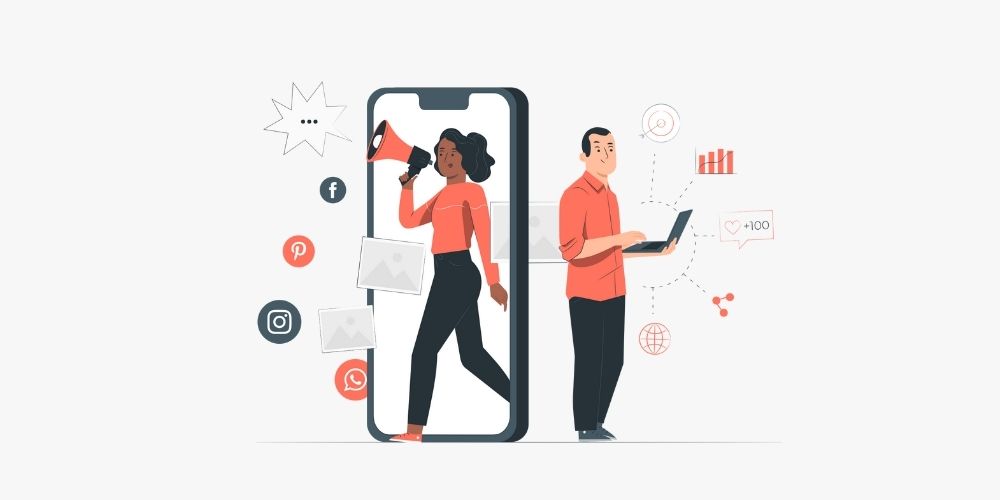The need for highly personalized messaging is on an all-time high; people are constantly searching for answers online, and they want these answers fast. While you might be scrambling for the right lead, your prospects will be barraged by competitors.
How then, do you ensure, that you are responding to these customers with the right message at the right time; how do you build an effective marketing automation strategy? What tools should you use to make it work? Let’s talk about this.
7 Elements of a powerful marketing automation strategy
1. Understand that marketing automation is a continuous process
Your marketing automation campaigns should start with welcoming a prospect when they sign-up for your product, Your marketing automation campaigns should start when they first interact with you and give you their information in exchange for something. It could be a product sign-up, newsletter subscription, request for a quote, interest in content, etc. Welcome the prospect and continue to nurture leads with relatable content throughout their buying journey and beyond. Your goal should be to delight them and keep them interested in your brand. Because that’s how you’ll build a relationship.
There’s no restriction on the channel of communication you choose, but it’s better to find out where your customers are active the most. In general, emails are one of the most effective channels, and you can easily implement them in your marketing automation strategy.
Email marketing automation finds its place in the pre-conversion, conversion, and post-conversion stages. During these stages, an event or an activity triggers an email. Also known as drip emails, they are a kind of automated email chain sent to the specific recipients based on a triggering event. Interestingly, it doesn’t require any human intervention.
Welcome email
These are for the new wide-eyed folks that need a little bit of extra attention. So you gently prod and nudge them to take that first step through your door. Your drip email welcomes them, gets them seated, and familiarises them with all that you represent. Experian’s white paper on welcome emails shows that these autoresponders enjoy a 58.7% open rate on average. And when the welcome email is sent instantly (i.e., right after the user signs up), the open rate jumps to 88.3%.
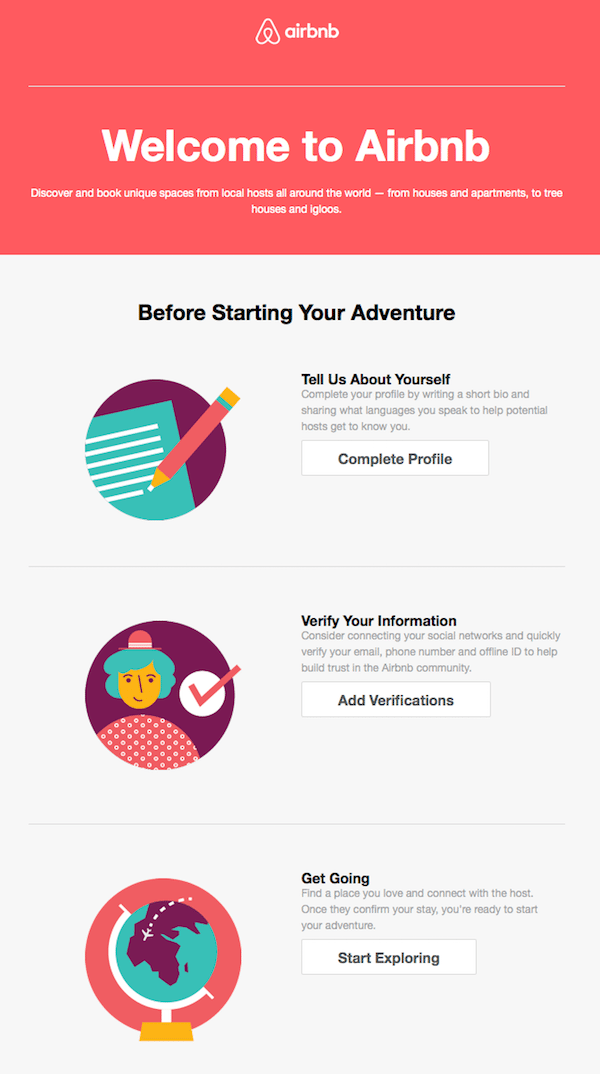
Nurturing email
You could offer free trials or a discount on signing up for newsletters. You promise them there is much to gain by not walking out that door. Research shows that companies that excel at lead nurturing generate 50% more sales at 33% lower cost.
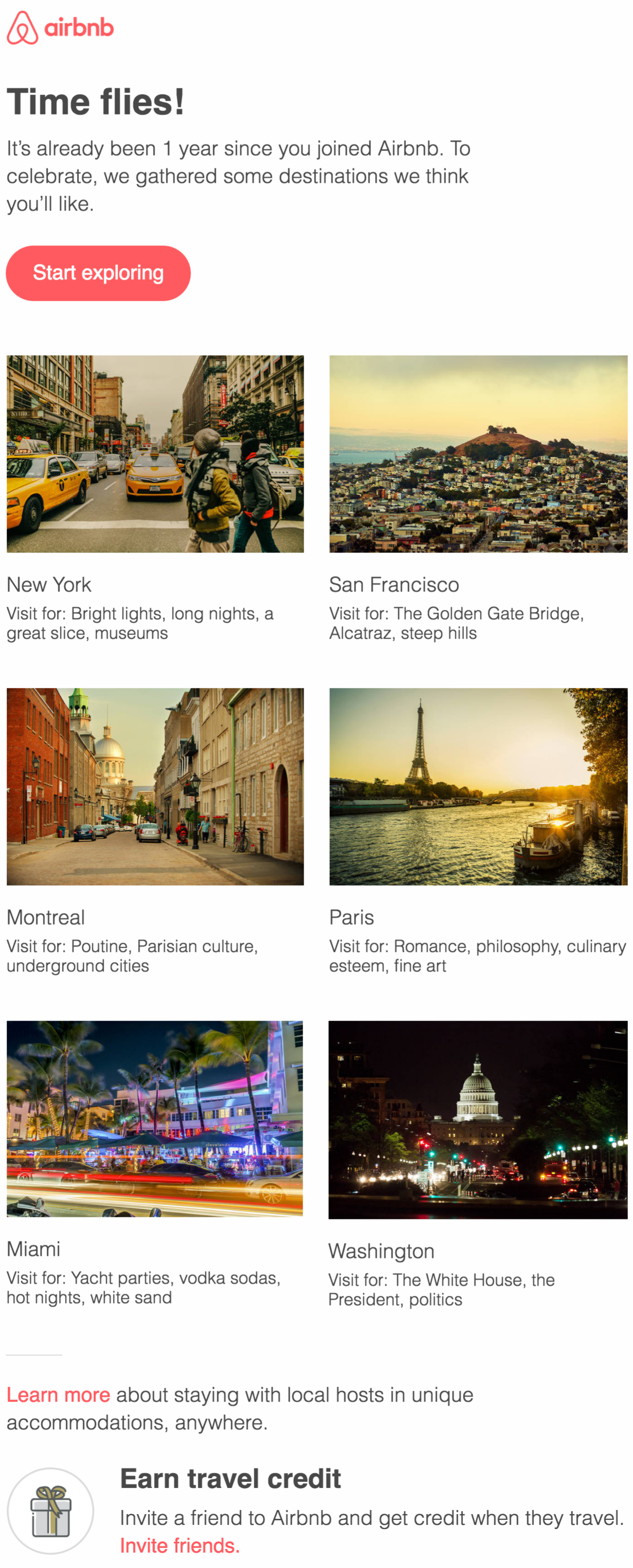
Abandoned shopping cart email
You were about to believe that you’re one step away from nailing the deal when your prospect suddenly bolts out of that door. Did they receive a better deal elsewhere? Or did they just go out for some air? Your best bet is to reengage them by sending them a reminder at a time they are least likely to be busy.
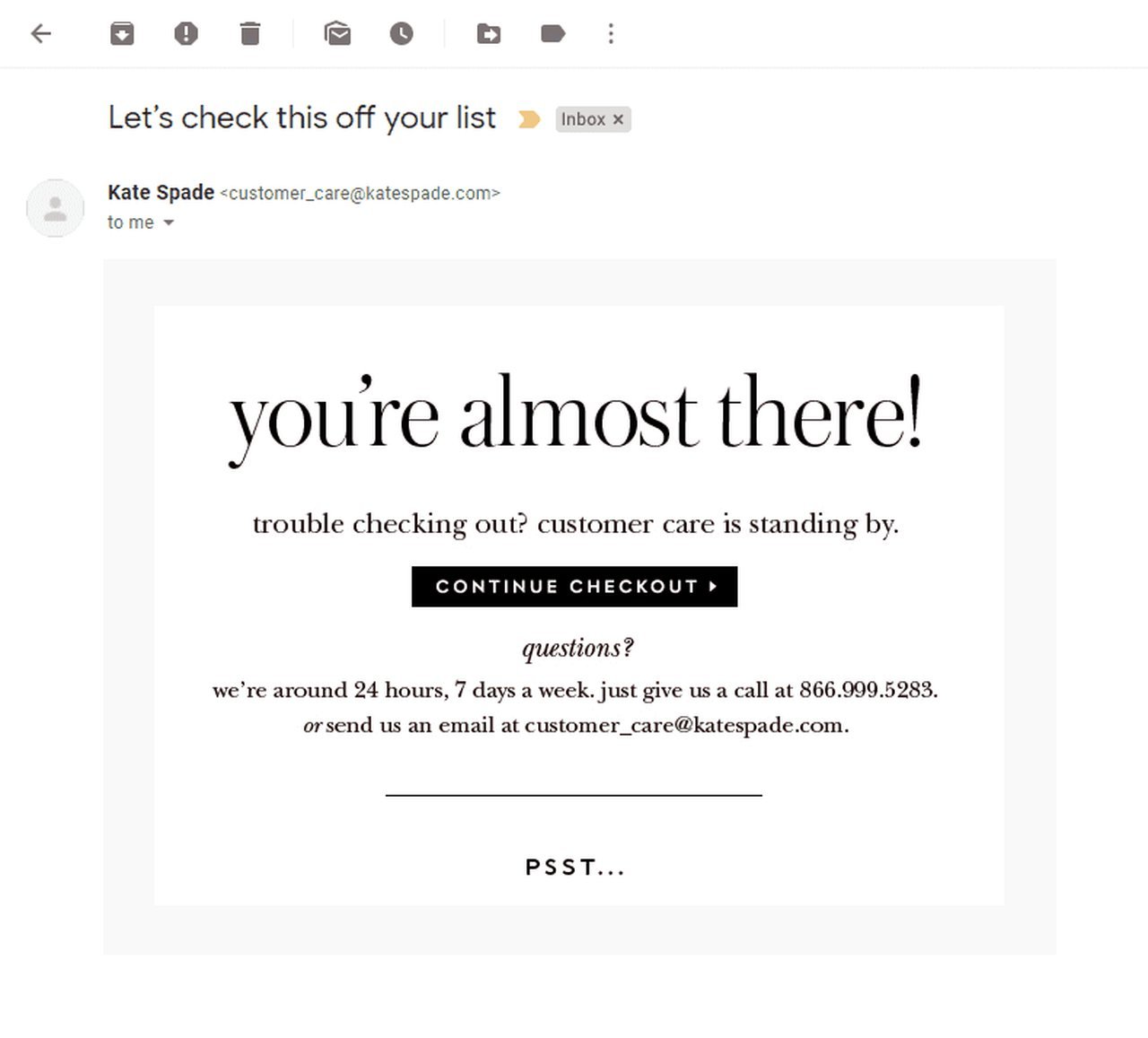
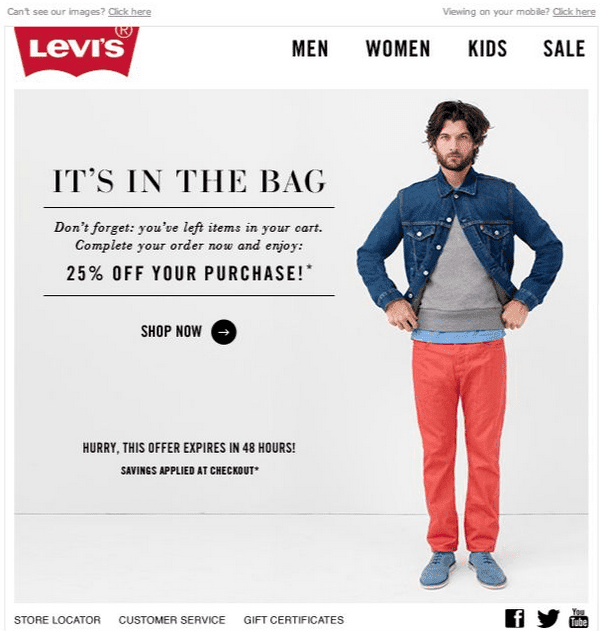
Purchase confirmation email
A confirmation email can also be a great tool to cross-sell other products. For example, during a flight booking on MakeMyTrip, they sell hotel bookings, pick up and drop cabs, and daily rentals. You can also utilize such emails for customer reviews and feedback.
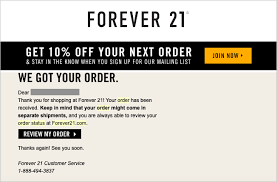
Product recommendation email
“You might also like” and “Because you liked” are some of the most common recommendation drip emails. Today, based on past purchases and browsing history, companies also send personalized and timely recommendations.
Reminder email
These emails serve as reminders for renewals. They will assist in the renewal process and thank customers for choosing to renew. These are great in earning revenue from your existing customer base. Subscription renewals, policy renewals in insurance, timely service reminders like oil change, filter changes, and event reminders are a few instances reminder emails are used.
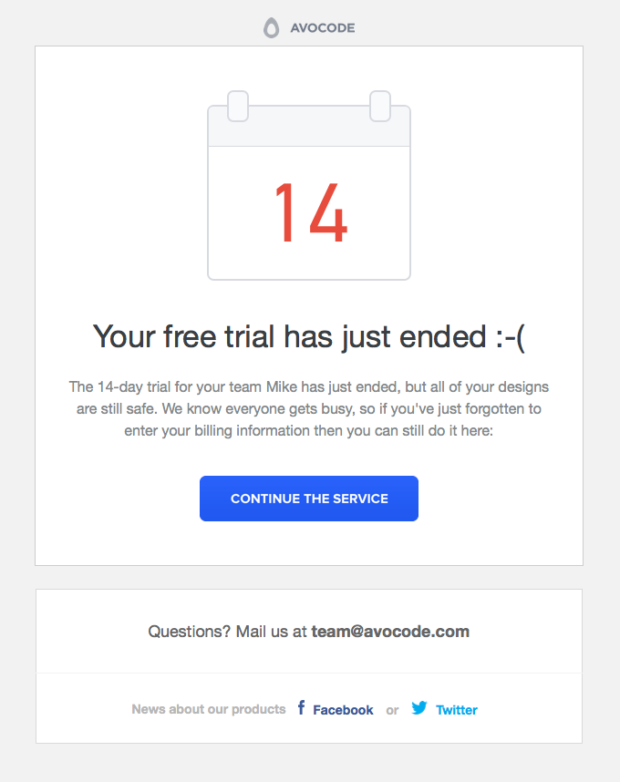
Customer engagement email
Engagement emails do just that. They engage prospects and previous customers so that you lurk in their inboxes and their memories for future purchases. Automated “We miss you” messages, wishes on birthdays, anniversaries are a great way to lend a personal touch and perhaps even prompt a purchase.
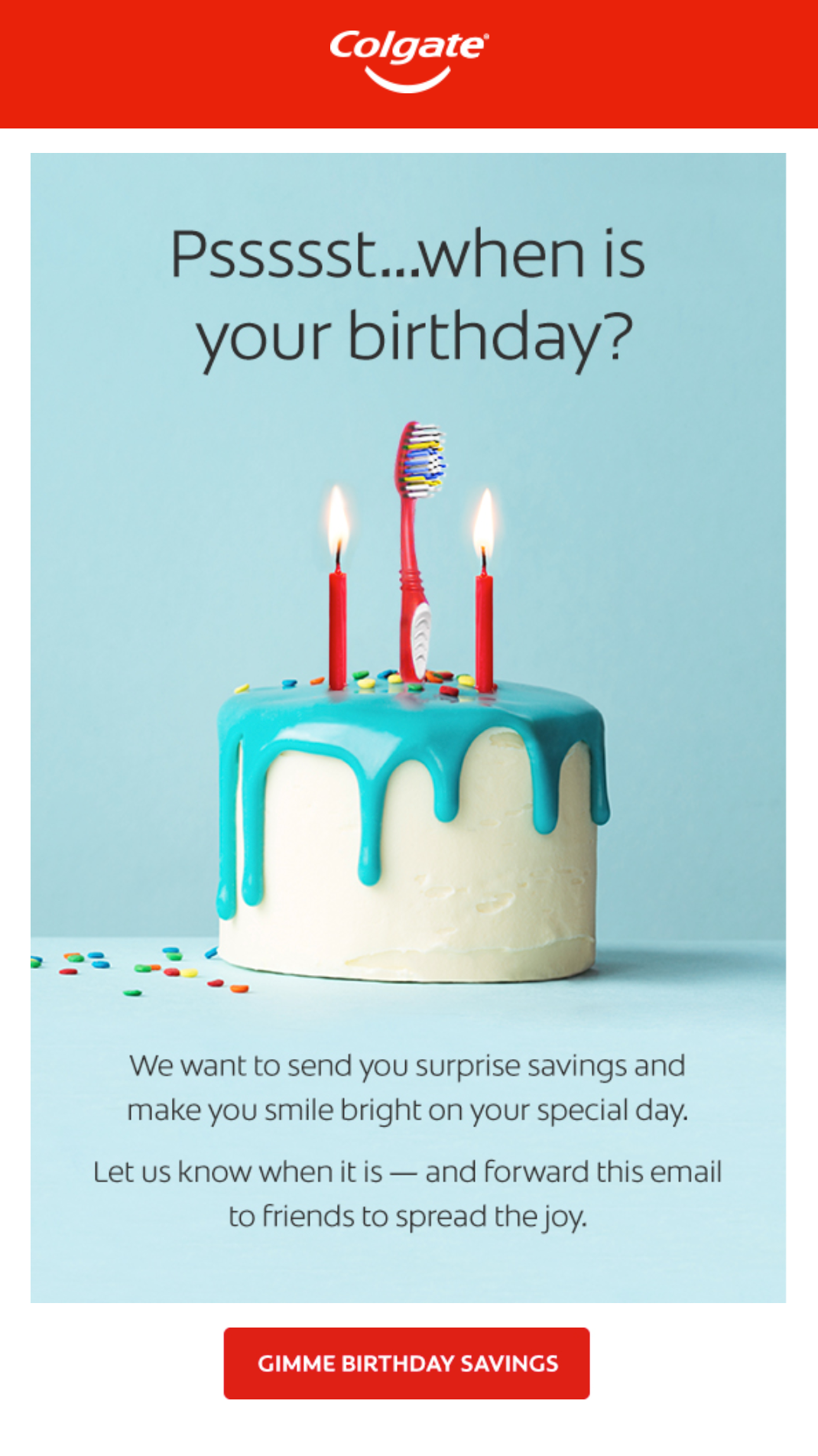
Remarketing and Re-engagement emails
Remarketing emails are used for prospects who left the buying journey without making a purchase. Re-engagement emails are used to retain existing customers.
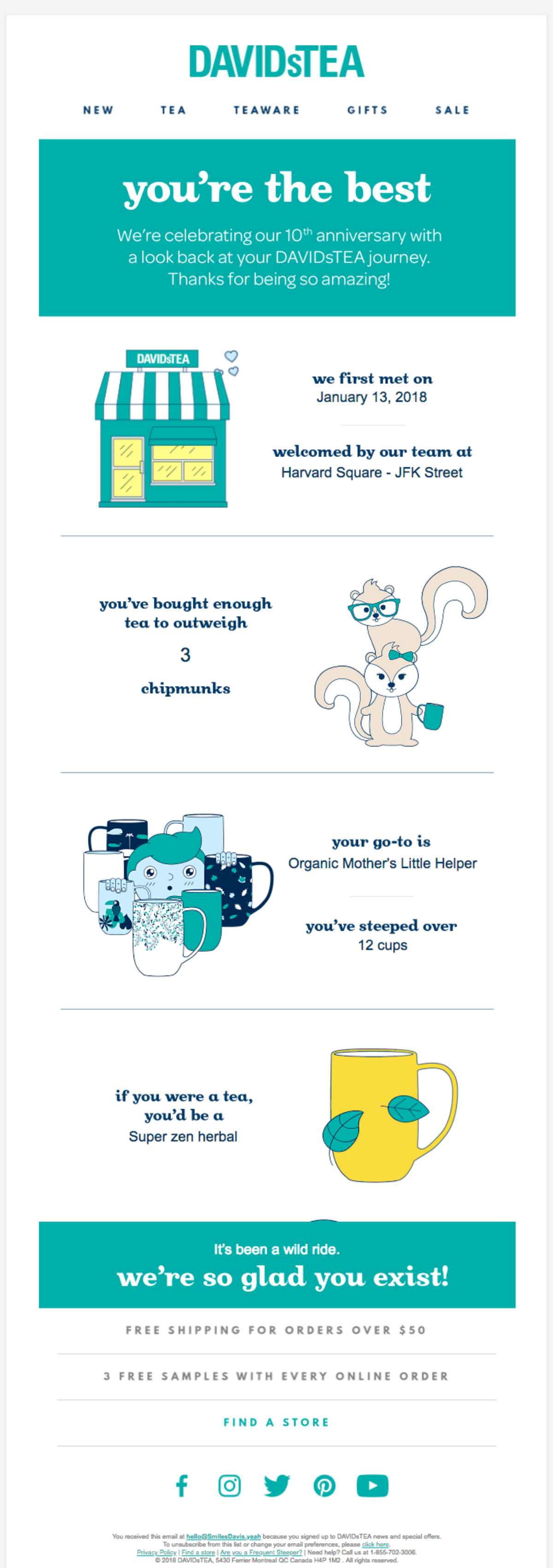
So, we saw that your marketing automation strategy should be a continuous process, where you keep in touch with customers from time to time. However, don’t limit yourself to emails. Feel free to utilize DMs (Direct Message) on social media, SMS, and other forms of communications that your buyer prefers. Let’s look at this in detail.
2. Market across all channels
While much is said about personalization, it isn’t truly personal unless we use all available information about a prospect. Knowing your prospect’s gender or age isn’t enough when your competitors could dig deeper into their needs, interests, and behavior. Marketers can fully understand their buyers’ needs using inputs from all the channels (including social media). A good marketing automation strategy capitalizes on their interactions across all channels. This helps in delivering the right information at the right time through the right channel. This is how you will be able to sell hiking shoes to a hiker who was looking for trail routes on Instagram and not hiking shoes.
Customers now being present across all channels, go omni or go home, seems to be the new mantra for all businesses today. The purchase rate of omnichannel campaigns is 287% higher than single-channel campaigns. It indicates that omnichannel campaigns yield more revenue for businesses. In Omnichannel marketing, you connect to your customer using both traditional and digital channels.
A customer could be browsing your store physically and simultaneously receiving offers on their mobile device. For instance, 85% of digital consumers start the purchasing workflow on one device but finish it on another. Prospects tend to do their research across multiple channels. Omnichannel marketing will make your presence felt at different points of the customer’s journey.
But note that omnichannel marketing takes place in real-time. It is dynamic and adapts quickly to customer’s responses. Therefore, all your customer-facing teams must have access to the customer data. Teams like sales, marketing, operations, customer success, and product development must work together to ultimately deliver consistency and value to the customer.
Example of omnichannel marketing automation:
Sephora is a popular cosmetics brand with 2600 stores across 36 countries. These beautiful fragrant stores now market their products across multiple channels to a customer base who once thought buying cosmetics could not happen virtually. Sephora adopted omnichannel marketing and integrated its superior in-store experiences with various app-based features. From sales personnel assisting customers with digital screens and menus to social media influencers providing content and make-up tutorials online, Sephora has left no channel untouched to get in touch with their customers. They introduced technology to deliver a superior customer experience. Sephora’s mobile app uses face recognition to let the customer see themselves using the product. It proved to be a breakthrough, especially in the pandemic, when customers shopped for beauty products without leaving their homes.
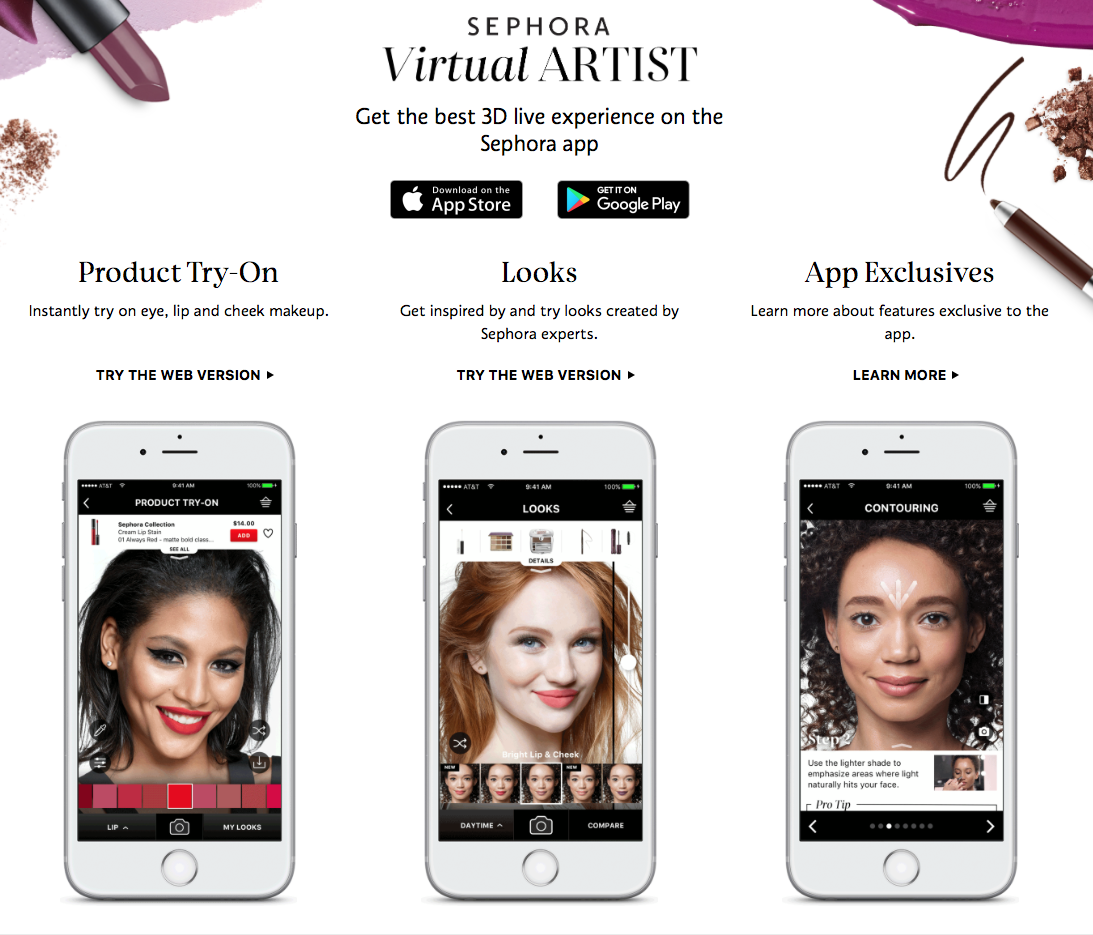
This way, Sephora seamlessly integrates the web browsing and app experience into their in-store experience.
3. Identify the right audience
Haven’t we all wishfully imagined a scenario where we could contact all our leads personally, give our best shot and turn them into clients? Well, marketing automation does that for you. It ensures that you don’t try to sell skateboards to a 60-year-old arthritic person.
To reap the benefits of marketing automation, a steady flow of leads is necessary. Without targeted marketing automation strategy, you would more often than not fire shots in the dark. You will hit a few relevant leads. But you’ll also be pestering many others who are not your targets. Segmenting your audience using available data will help you offer them the best deal. Segmenting can be demographic, geographical, behavioral, etc.
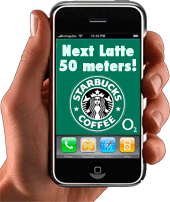
For example, Starbucks uses push notifications for location-based targeting.
4. Engage your buyers with relevant content
Triggering events and customers’ behavior decides when communication has to be initiated, your omnichannel strategy determines where and which channel to use. Now, it’s time to decide the ‘What’.
How do you stand out in the sea of messages in your prospect’s inbox? Content can be a deal-breaker in automated messages. Your automated marketing efforts have the best chance of success if you align the content with customer’s interests and past behaviors.
This is where you put your valuable subscriber data to use for personalized communication. You address them by their first names, create content based on their actions and provide additional information through videos and articles. A quiz or a contest are great ways to pique their interest.
Create unique content for different platforms. For example, when a person checks email on a mobile phone, they may not scroll infinitely. So, wrap up your content and give a clear call to action within the first few scrolls. Also, people will just leave without reading or engaging with your content if the display isn’t proper. So, ensure that your ads, website, email, etc., are mobile-friendly.
It’s also important to pay attention to how an ad transitions from one channel to another. A person clicking on a sale ad for shoes on Instagram should not be directed to the new arrivals section on the website. Your message will lose credibility in this manner.
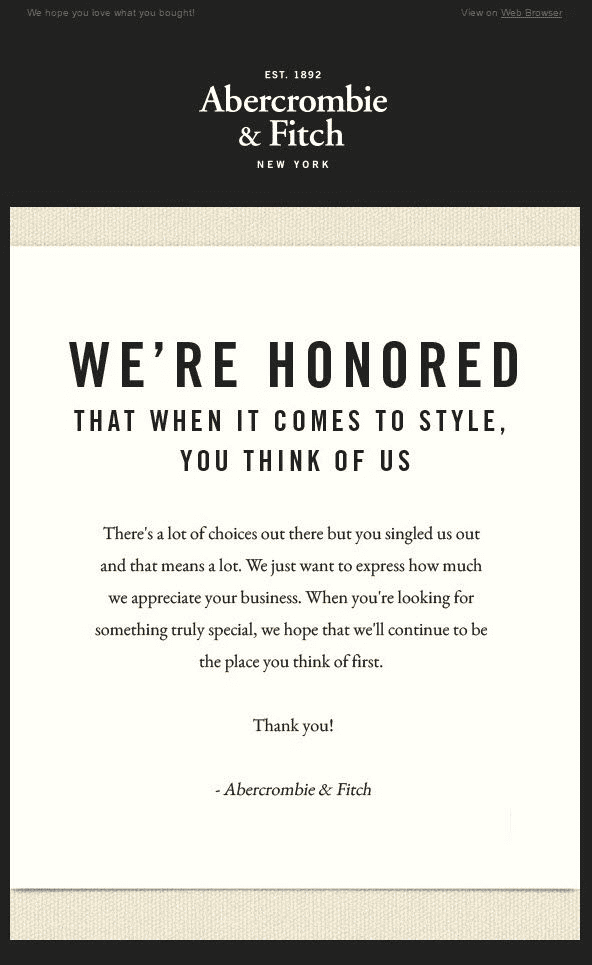
Content that has a personal touch is often hard to overlook. A Nielsen study showed that 84% of the time, a person will take action based on personal recommendations. And 41% of consumers switched companies due to poor personalization (source).
5. Automate up-sell and cross-sell
Upselling is marketing a more valuable product to the buyer. These could be more expensive items, upgrades, or add-ons to make a more profitable sale. Cross-selling refers to marketing a complimentary product or service. Let me explain.
Upselling would suggest a customer an iPhone 12 instead of an iPhone 11, and cross-selling would recommend an additional purchase of a tampered glass, a cover, and airdrops for the new phone. Cross-selling doesn’t end with the customer checking out. Using confirmation and recommendation emails, you can enroll the customer in loyalty and reward programs and cross-sell, all at once.
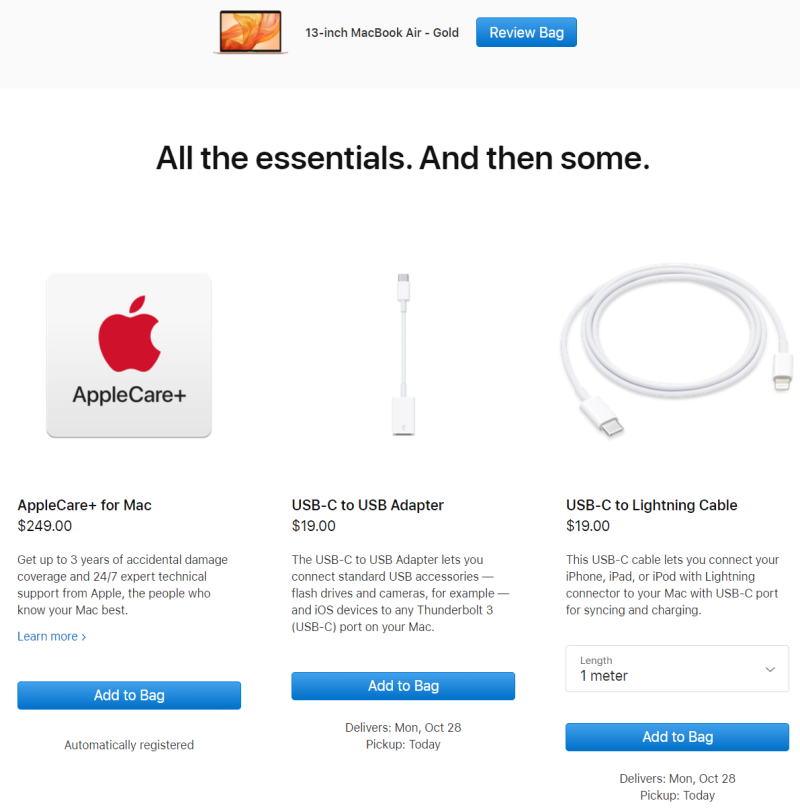
CRM systems capture customers’ data (behavioral and identity data) and use them to provide cross-selling and upselling signals. Coupled with marketing automation, the system can send automated product recommendations or discount codes when the customer navigates certain pages on your website or interacts with your ads. You can also use marketing automation to bundle products commonly seen under ‘frequently bought together’ categories.
Below are some astonishing benefits of personalization.
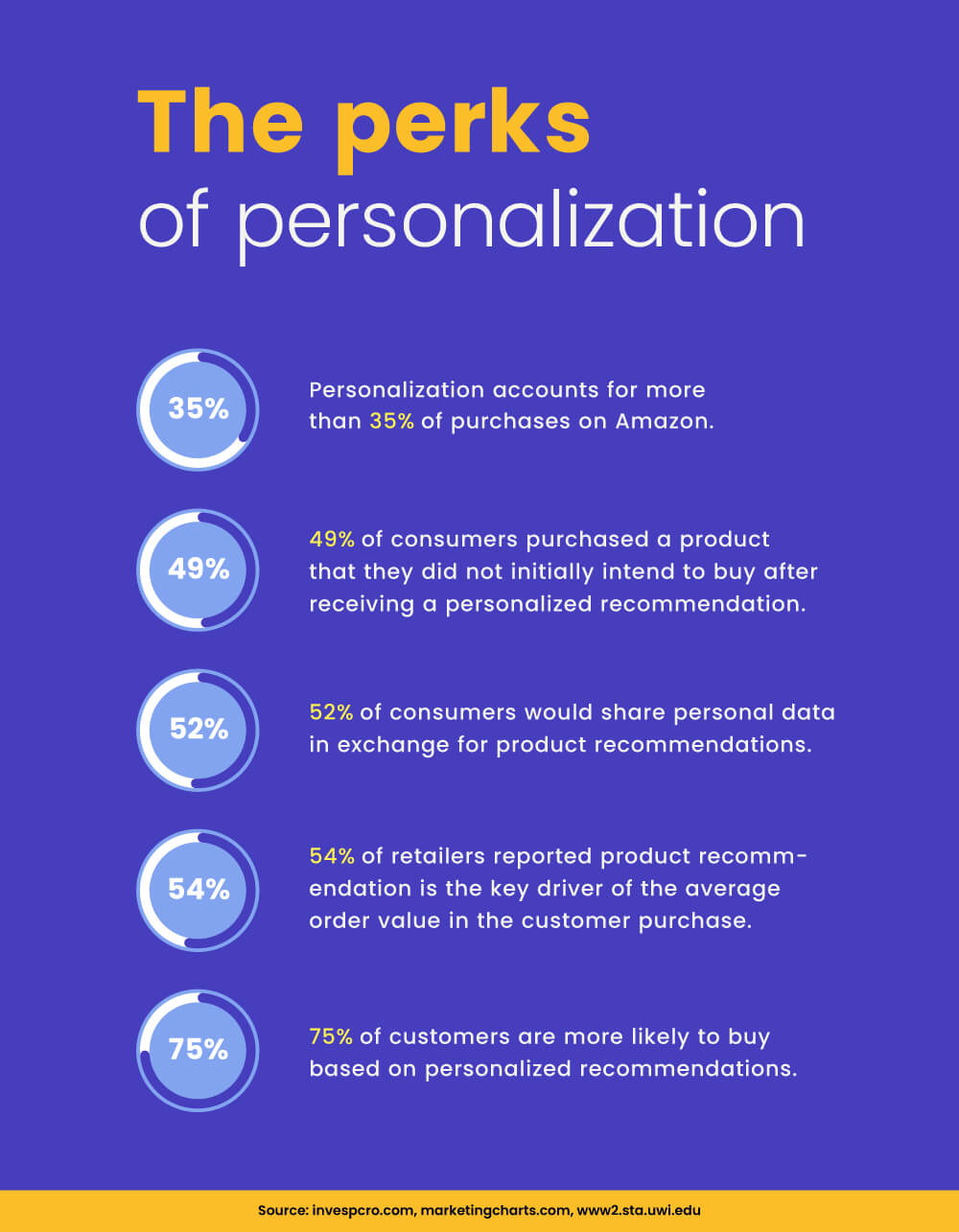
6. A/B test your campaigns
Instead of wondering which content got more clicks and leaving everything to guesswork, A/B testing lets you run two variations of the same content to find out which works better.
A/B testing or Split testing or Bucket testing addresses the pertinent questions of what works (content, design, etc.) and at what time (weekdays, weekends, morning, noon, and evening), and how (the number of times a customer views a promotion, combination of channels, etc.). Working on your test answers will enhance open rates, click rates, and customer engagement. By measuring the metrics, you have a better chance at improving them. A/B testing will give you more insights about customer behavior, provided they are run for a longer period and on an equal-sized sample.
Note that you can use A/B testing software or simply monitor different campaign performances in your CRM tool to figure out what works and what not with your audience.
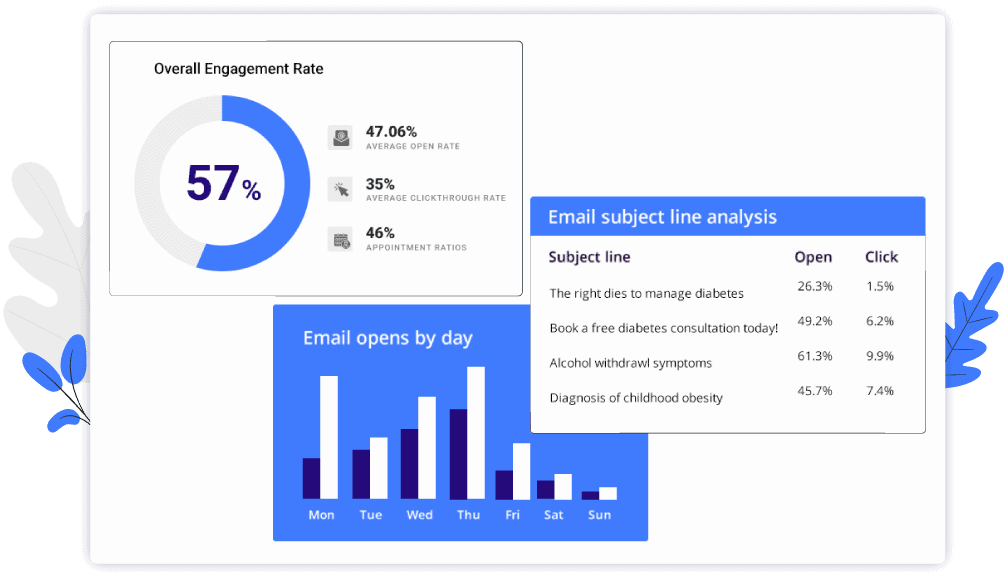
7. Exercise caution when automating communications
While automation increases efficiency, it’s important to understand its limitations. Automating all your marketing tasks solely to save time is a sure way to backfire your existing strategy. It is, therefore, crucial to analyze and recognize tasks that need automation. While marketing automation strives to provide a personalized experience, it can easily do the reverse if not used cautiously. For instance, strangling a banking customer who needs a resolution in an endless loop of automated messages is a recipe for disaster.
Also, today’s customers value privacy more than ever. Thus it is important to draw a balance and know how far is too far. Customers feel valued when they are given a choice.
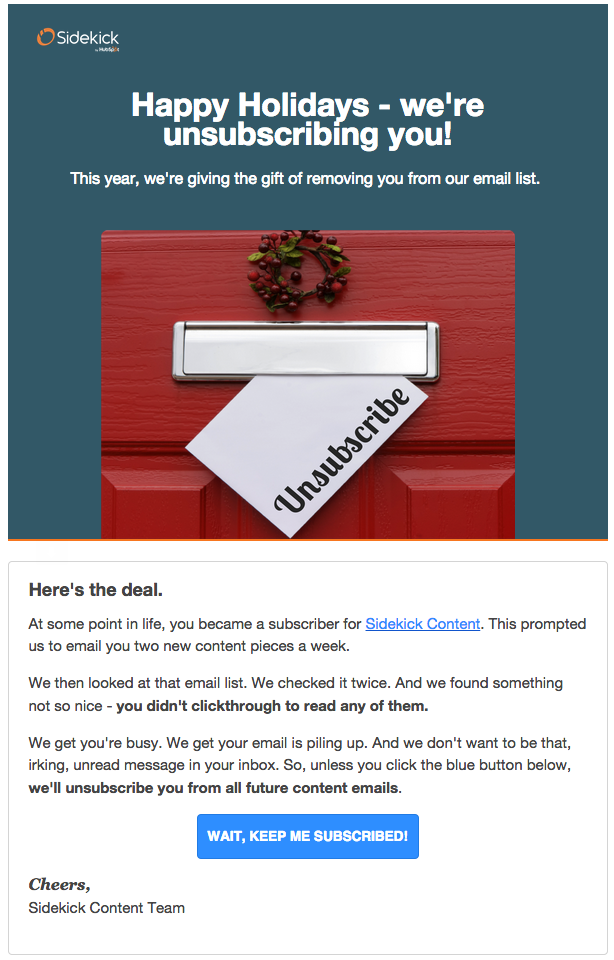
In conclusion
I hope the above points will help you plan your marketing automation strategy better. However, keep the following points in mind to stay relevant to your buyers.
- A/B test your content, images, platforms and take decisions based on data (not opinions).
- Define the metrics important for your brand and align your team accordingly. For instance, for brand awareness campaigns, impressions on ads could be a crucial metric. Whereas, for sales campaigns, clicks, conversions, and customer retention will be more important.
- Respect your buyers’ privacy. If they choose to opt out of your marketing communication, don’t bother them with promotional emails.
- Use marketing automation tools to communicate effectively with your prospects and customers across several channels.
If you’re looking for end-to-end marketing automation software to capture leads, understand intent, manage interactions, measure campaign performance, and more, check out LeadSquared Marketing Automation software. You can also take a free 15-day trial to experience its capabilities.
FAQs
Marketing automation workflow refers to the triggering of campaigns based on user activities. It may involve several touchpoints in the buyer’s journey across different channels. For example, an automated welcome email sent to a user when they subscribe to a service.
LeadSquared Sales CRM and Marketing Automation suite is one of the best tools to streamline all your sales and marketing activities.





